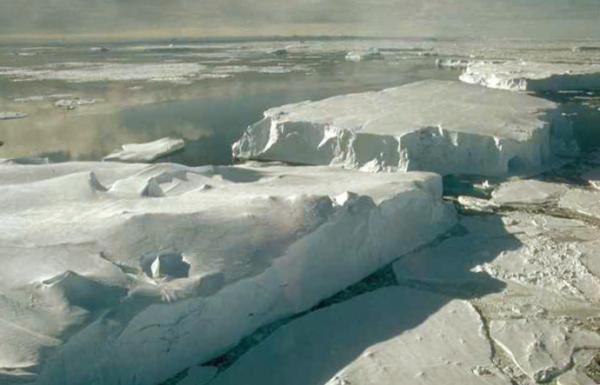Science News
Arctic Sea Ice
December 16, 2010

At the AGU Meeting today, four scientists discussed where the last arctic sea ice will be, why it will be there and how it will be able to protect some of the life there.
Using a very disturbing animation of how the ice has changed over the past 30 years, it's easy to see where the older sea ice accumulates. Right along the northern edges of the Canadian Archipelago and Greenland. (It's also very clear to see how fast we're losing this older ice.) The ice is pushed to this area of the Arctic Sea (from above Siberia and Alaska) because of the wind patterns in the area.
As we lose more of the Arctic sea ice over the next several decades, scientists believe this area will become “The Last Arctic Sea Ice Refuge.”
Polar bears and pinnipeds (seals, sea lions, walrus)—not to mention birds, foxes and basically life all the way down to the microplankton—rely on this ice for food, nutrients and shelter. Knowing where this last refuge will appear can better form conservation plans in the future.
This last refuge is created under “business as usual” models—meaning the world’s human population would make no effort to reduce global warming.
But what if we did? An article, published in Nature yesterday titled “Greenhouse gas mitigation can reduce sea-ice loss and increase polar bear persistence”, takes exactly that viewpoint—what if humans do change their ways? The news is positive, according to Nature News:
Steven Amstrup of the US Geological Survey in Anchorage, Alaska, and his colleagues looked at models of future sea ice circulation and found no evidence of a 'tipping point' of warming beyond which the ice will disappear irreversibly. So bringing greenhouse-gas emissions under control, they write, should help to preserve polar-bear habitat and Arctic ecosystems at large.
A call to action, perhaps?
Image: ESA